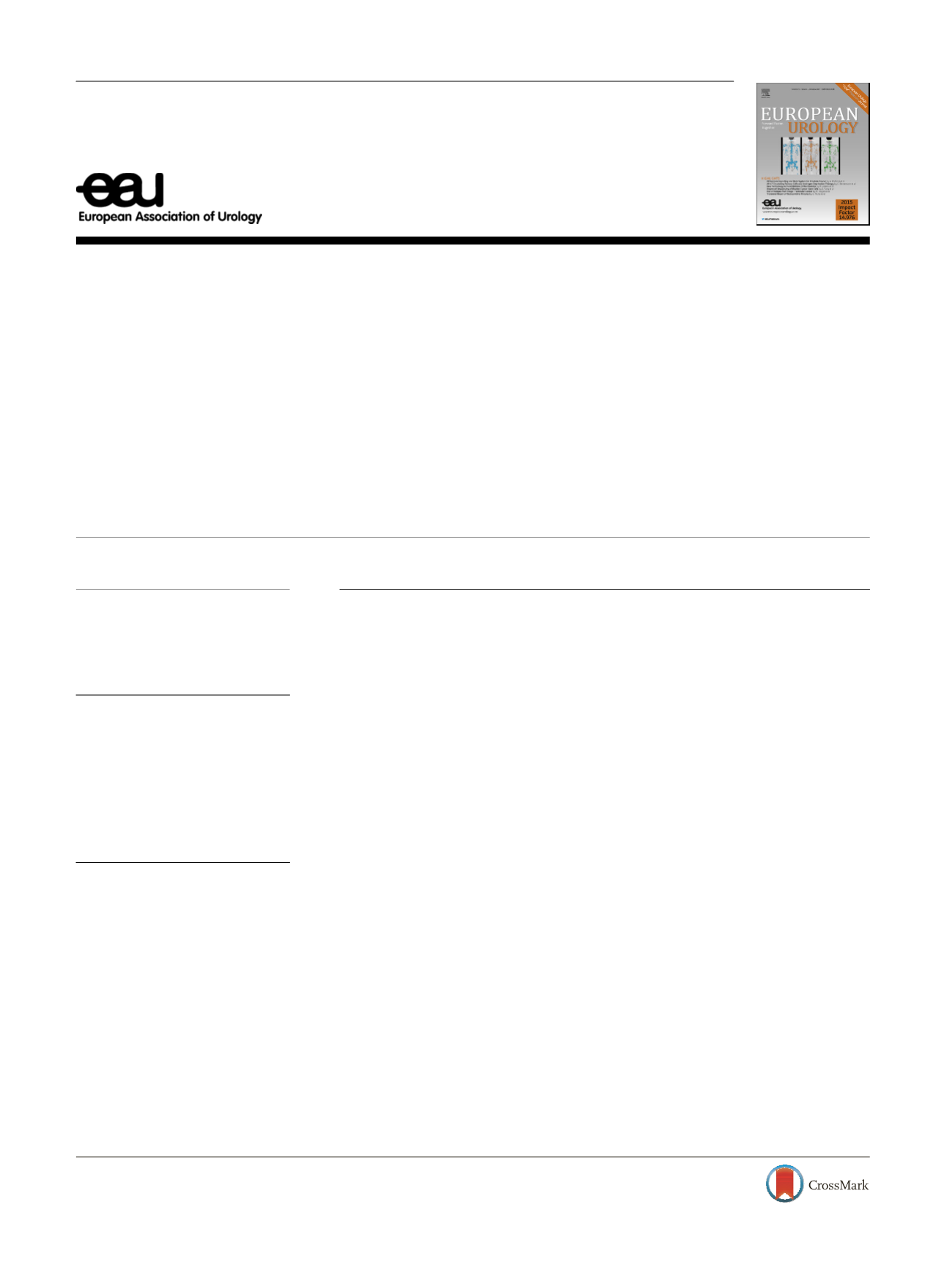

Surgery in Motion
Advanced Reconstruction of Vesicourethral Support (ARVUS)
during Robot-assisted Radical Prostatectomy: One-year
Functional Outcomes in a Two-group Randomised
Controlled Trial
Vladimir Student Jr
. a , b ,Ales Vidlar
a , b ,Michal Grepl
a , b ,Igor Hartmann
a , b ,Eva Buresova
a , b ,Vladimir Student
a , b , *a
Department of Urology, University Hospital, Olomouc, Czech Republic;
b
Faculty of Medicine and Dentistry, Palacky University, Olomouc, Czech Republic
E U R O P E A N U R O L O G Y 7 1 ( 2 0 1 7 ) 8 2 2 – 8 3 0available at
www.scienced irect.comjournal homepage:
www.europeanurology.comArticle info
Article history:
Accepted May 23, 2016
Associate Editor:
Alexandre Mottrie
Keywords:
Anastomosis
Continence
Erectile function
Functional reconstruction
Prostate cancer
Robot-assisted radical
prostatectomy
Please visit
www.europeanurology.comand
www.urosource.comto view the
accompanying video.
Abstract
Background:
The advent of robotics has facilitated new surgical techniques for
radical prostatectomy. These allow adjustment of pelvic anatomical and functional
relationships after removal of the prostate to ameliorate postprostatectomy inconti-
nence (PPI) and reduce the time to complete continence.
Objectives:
To describe the results of a new surgical technique for reconstruction
of vesicourethral anastomosis using the levator ani muscle for support during
robot-assisted radical prostatectomy (RARP).
Design, setting, and participants:
A prospective, randomised, single-blind study among
66 consecutive patients with localised prostate cancer (cT1–2N0M0) undergoing RARP
from June to September 2014, 32 using the new technique and 34 using the standard
posterior reconstruction according to Rocco.
Surgical procedure:
In the advanced reconstruction of vesicourethral support (ARVUS)
intervention group, the fibres of the levator ani muscle, Denonvilliers fascia,
retrotrigonal layer, and median dorsal raphe were used to form the dorsal support
for the urethrovesical anastomosis. Suture of the arcus tendineus to the bladder neck
served as the anterior fixation.
Measurements:
We compared demographic data and preoperative and postoperative
functional and oncologic results for the two groups. The primary endpoint was conti-
nence evaluated at different time points (24 h, 2, 4, and 8 wk, and 6 and 12 mo). The
secondary endpoints were perioperative and postoperative complications and erectile
function.
Results and limitations:
Using a continence definition of 0 pads/d, the continence rates
for the ARVUS versus the control group were 21.9% versus 5.9% at 24 h (
p
= 0.079), 43.8%
versus 11.8% at 2 wk (
p
= 0.005), 62.5% versus 14.7% at 4 wk (
p
<
0.001), 68.8% versus
20.6% at 8 wk (
p
<
0.001), 75.0% versus 44.1% at 6 mo (
p
= 0.013), and 86.66% versus
61.29% at 12 mo (
p
= 0.04). International Index of Erectile Function questionnaire
results at 6 and 12 mo after surgery showed similar potency rates for the control group
(40.0% and 73.33%) and the ARVUS group (38.8% and 72.22%). There were four postop-
erative complications (2 in each group): three haematomas requiring transfusion and
one lymphocele that needed drainage. No urinary retention, anastomosis leak,
or perineal pain was observed. Limitations include the small sample size and the
single-institution design.
* Corresponding author. Department of Urology, University Hospital, I.P. Pavlova 6, Olomouc 77900,
Czech Republic. Tel. +42 60 3760396.
E-mail address:
studentv@seznam.cz(V. Student).
http://dx.doi.org/10.1016/j.eururo.2016.05.0320302-2838/
#
2016 European Association of Urology. Published by Elsevier B.V. All rights reserved.
















